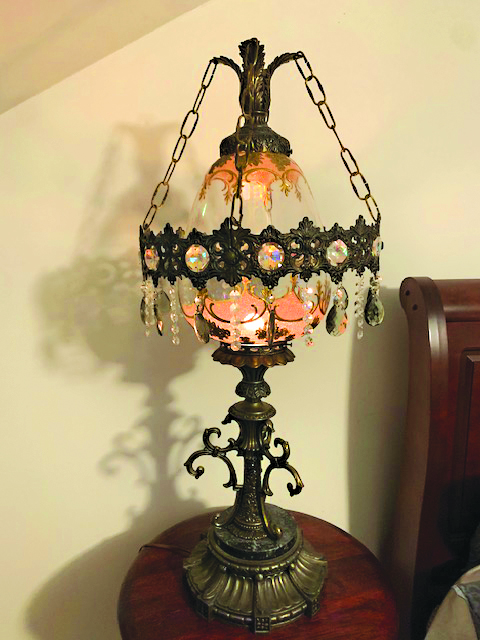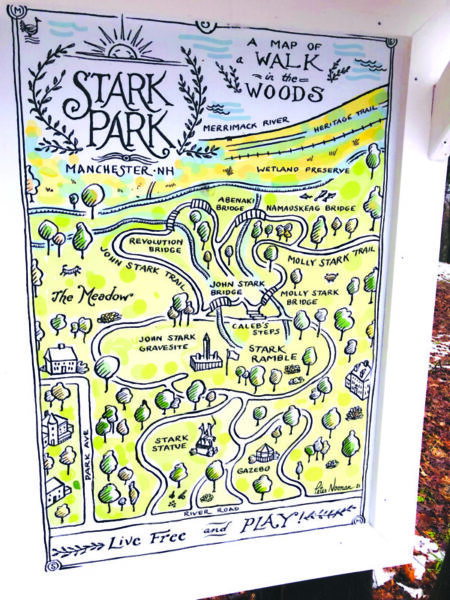News from the local food scene
• Meet Robert Irvine: The host of Food Network’s Restaurant: Impossible, Robert Irvine will appear at the New Hampshire Liquor and Wine Outlet in Bedford (9 Leavy Drive) on Thursday, Feb. 10, from 2:30 to 4:30 p.m. to sign bottles of his Irvine Dry Gin and Irvine Vodka, according to a press release. Proceeds from sales of those spirits go to support military personnel and first responders, the release said.
• Ready for kickoff: The Patriots may have been eliminated from the playoffs, but if you’re still planning on tuning in to the Big Game (Sunday, Feb. 13), some local eateries have you covered. Friendly Red’s Tavern (22 Haverhill Road, Windham) for instance, is offering party packs of 24 chicken wings with sauces, 16 potato skins with sour cream and 10 pretzel sticks with cheese sauce — orders will be accepted right through noon on the day of the game for onsite pickup. Email [email protected] or call 437-7251. At Copper Kettle To Go (39 Main St., Wilton), platters are available for pre-order featuring your choice of steak and cheese and chicken Parm egg rolls with dipping sauces, or assorted snacks like potato skins, mozzarella sticks, jalapeno poppers and mango habanero wings, as well as Boston cream cake bombs. Order by Feb. 9, for pickup on Saturday, Feb. 12. Visit copperkettletogo.com.
• Eat organic: Join the Northeast Organic Farming Association of New Hampshire for its 20th annual winter conference, to be held via Zoom over the course of several days from Sunday, Feb. 6, through Saturday, Feb. 12. Normally a one-day event with more than 40 interactive workshops, a keynote speaker and a Q&A session, the conference switched to a series of virtual events in 2021. The theme of this year’s conference is “collaboration and self-reliance,” with workshops that will cover a variety of topics such as community food security, agroforestry, beekeeping, organic seeding, edible garden growing and more. You don’t have to be an expert farmer or gardener to take part in them — anyone interested in learning about organic food practices is welcome to attend. According to NOFA-NH program coordinator Laura Angers, registration starts at $50 and includes access to all of the workshops, in addition to their recordings for three months after the conference if you miss any of them you wanted to view. Visit nofanh.org/winterconference for the full schedule of featured speakers, topics and times.
• Mischief and cocktails: Save the date for Manchester’s Most Wanted, a special interactive event happening at the Millyard Museum (200 Bedford St., Suite 103, Manchester) on Thursday, Feb. 17, from 5 to 7 p.m. Actors from the Majestic Theatre will be portraying some of the Queen City’s most nefarious pre-Victorian era villains throughout an evening that will also feature appetizers, a cash bar and more. Tickets are $25 per person or $20 per Manchester Historic Association member (event is 21+ only) and include a complimentary cocktail and souvenir shot glass. Visit manchesterhistoric.org/events to register.
• Capital City pies: After several months of construction, a new full-service dine-in restaurant featuring brick-oven artisan pizzas, appetizers and desserts made with local ingredients has arrived in downtown Concord. The New Hampshire Pizza Co. opened late last month in the former Crazy Goat space at 76 N. Main St., according to its website and social media pages, and also features local craft beers and specialty cocktails. It’s owned by Joel Harris, who also opened Dos Amigos Burritos, first in Portsmouth in 2003 and then in Concord four years later. “I’ve really come to love Concord … and I felt like full-service family-friendly brick-oven pizza would be a great addition to the city’s dining scene,” Harris told the Hippo back in August. Both traditional and specialty pies are available, in addition to gluten-free crusts and dairy-free options. The eatery is open Tuesday through Thursday, from 4 to 9 p.m., Friday and Saturday, from 4 to 10 p.m., and Sunday from 11 a.m. to 3 p.m., for brunch. Visit newhampshirepizzaco.com.







